Leonardo Badia
Energy Minimization for Participatory Federated Learning in IoT Analyzed via Game Theory
Mar 27, 2025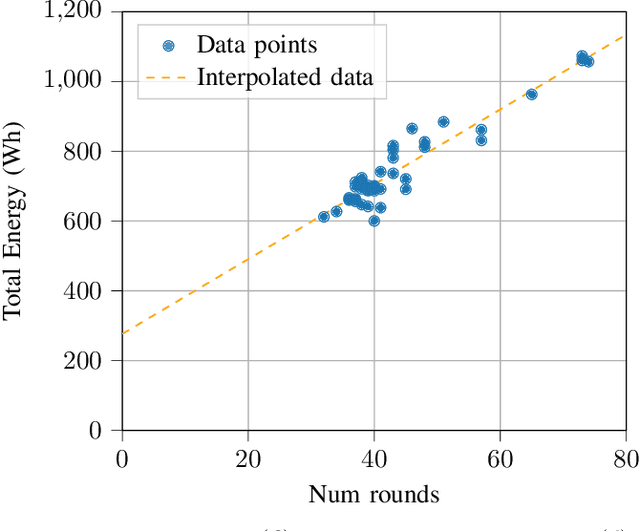
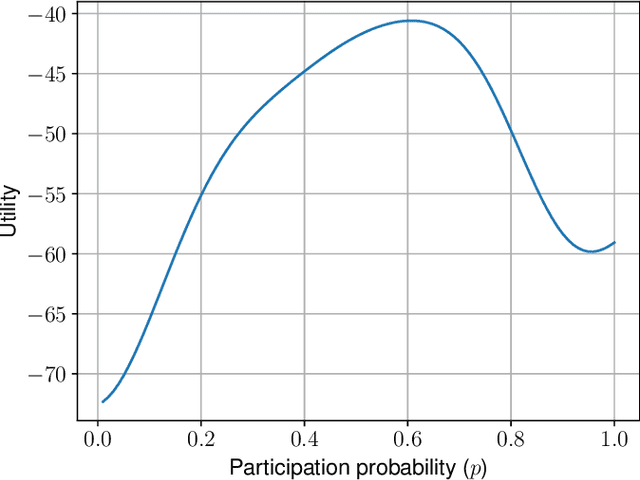
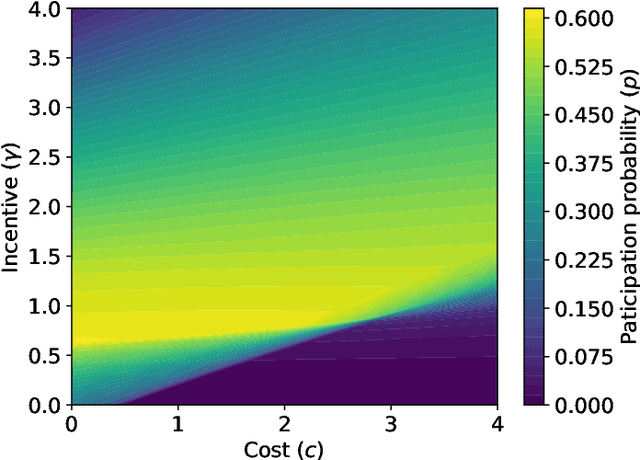
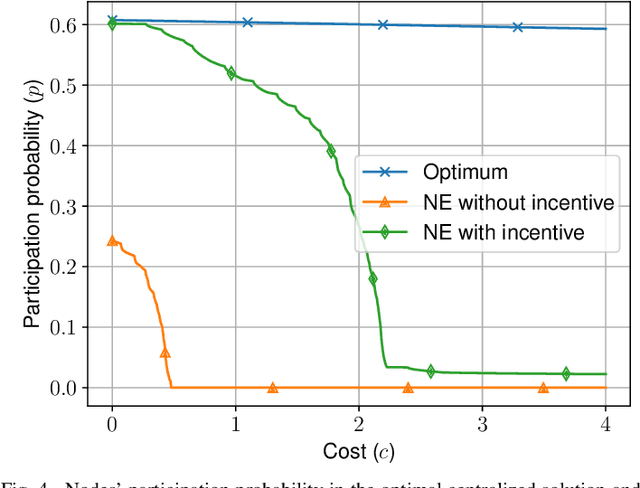
Abstract:The Internet of Things requires intelligent decision making in many scenarios. To this end, resources available at the individual nodes for sensing or computing, or both, can be leveraged. This results in approaches known as participatory sensing and federated learning, respectively. We investigate the simultaneous implementation of both, through a distributed approach based on empowering local nodes with game theoretic decision making. A global objective of energy minimization is combined with the individual node's optimization of local expenditure for sensing and transmitting data over multiple learning rounds. We present extensive evaluations of this technique, based on both a theoretical framework and experiments in a simulated network scenario with real data. Such a distributed approach can reach a desired level of accuracy for federated learning without a centralized supervision of the data collector. However, depending on the weight attributed to the local costs of the single node, it may also result in a significantly high Price of Anarchy (from 1.28 onwards). Thus, we argue for the need of incentive mechanisms, possibly based on Age of Information of the single nodes.
* 6 pages, 6 figures, 2 tables, conference
SAGE: Semantic-Driven Adaptive Gaussian Splatting in Extended Reality
Mar 20, 2025
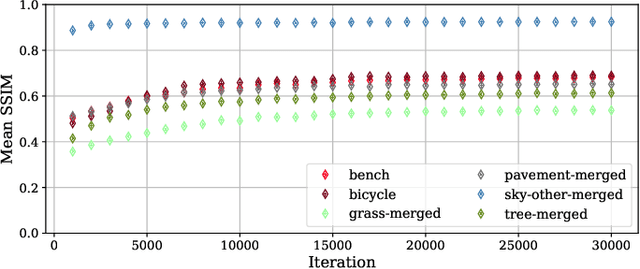


Abstract:3D Gaussian Splatting (3DGS) has significantly improved the efficiency and realism of three-dimensional scene visualization in several applications, ranging from robotics to eXtended Reality (XR). This work presents SAGE (Semantic-Driven Adaptive Gaussian Splatting in Extended Reality), a novel framework designed to enhance the user experience by dynamically adapting the Level of Detail (LOD) of different 3DGS objects identified via a semantic segmentation. Experimental results demonstrate how SAGE effectively reduces memory and computational overhead while keeping a desired target visual quality, thus providing a powerful optimization for interactive XR applications.
Scheduling for Downlink OFDMA With IRS Reconfiguration Constraints
Jan 05, 2024Abstract:The technical limitations of the intelligent reflecting surface (IRS) (re)configurations in terms of both communication overhead and energy efficiency must be considered when IRSs are used in cellular networks. In this paper, we investigate the downlink time-frequency scheduling of an IRS-assisted multi-user system in the orthogonal frequency-division multiple access (OFDMA) framework wherein both the set of possible IRS configurations and the number of IRS reconfigurations within a time frame are limited. We formulate the sum rate maximization problem as a non-polynomial (NP)-complete generalized multi-knapsack problem. A heuristic greedy algorithm for the joint IRS configuration and time-frequency scheduling is also proposed. Numerical simulations prove the effectiveness of our greedy solution.
Downlink Clustering-Based Scheduling of IRS-Assisted Communications With Reconfiguration Constraints
May 23, 2023Abstract:Intelligent reflecting surfaces (IRSs) are being widely investigated as a potential low-cost and energy-efficient alternative to active relays for improving coverage in next-generation cellular networks. However, technical constraints in the configuration of IRSs should be taken into account in the design of scheduling solutions and the assessment of their performance. To this end, we examine an IRS-assisted time division multiple access (TDMA) cellular network where the reconfiguration of the IRS incurs a communication cost; thus, we aim at limiting the number of reconfigurations over time. Along these lines, we propose a clustering-based heuristic scheduling scheme that maximizes the cell sum capacity, subject to a fixed number of reconfigurations within a TDMA frame. First, the best configuration of each user equipment (UE), in terms of joint beamforming and optimal IRS configuration, is determined using an iterative algorithm. Then, we propose different clustering techniques to divide the UEs into subsets sharing the same sub-optimal IRS configuration, derived through distance- and capacity-based algorithms. Finally, UEs within the same cluster are scheduled accordingly. We provide extensive numerical results for different propagation scenarios, IRS sizes, and phase shifters quantization constraints, showing the effectiveness of our approach in supporting multi-user IRS systems with practical constraints.
Downlink TDMA Scheduling for IRS-aided Communications with Block-Static Constraints
Jan 25, 2023



Abstract:Intelligent reflecting surfaces (IRSs) are being studied as possible low-cost energy-efficient alternatives to active relays, with the goal of solving the coverage issues of millimeter wave (mmWave) and terahertz (THz) network deployments. In the literature, these surfaces are often studied by idealizing their characteristics. Notably, it is often assumed that IRSs can tune with arbitrary frequency the phase-shifts induced by their elements, thanks to a wire-like control channel to the next generation node base (gNB). Instead, in this work we investigate an IRS-aided time division multiple access (TDMA) cellular network, where the reconfiguration of the IRS may entail an energy or communication cost, and we aim at limiting the number of reconfigurations over time. We develop a clustering-based heuristic scheduling, which optimizes the system sum-rate subject to a given number of reconfigurations within the TDMA frame. To such end, we first cluster user equipments (UEs) with a similar optimal IRS configuration. Then, we compute an overall IRS cluster configuration, which can be thus kept constant while scheduling the whole UEs cluster. Numerical results show that our approach is effective in supporting IRSs-aided systems with practical constraints, achieving up to 85% of the throughput obtained by an ideal deployment, while providing a 50% reduction in the number of IRS reconfigurations.
Game-Theoretic Mode Scheduling for Dynamic TDD in 5G Systems
Apr 26, 2021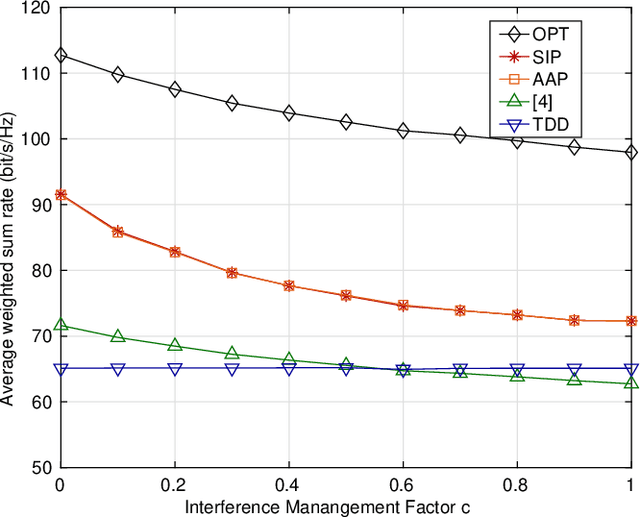
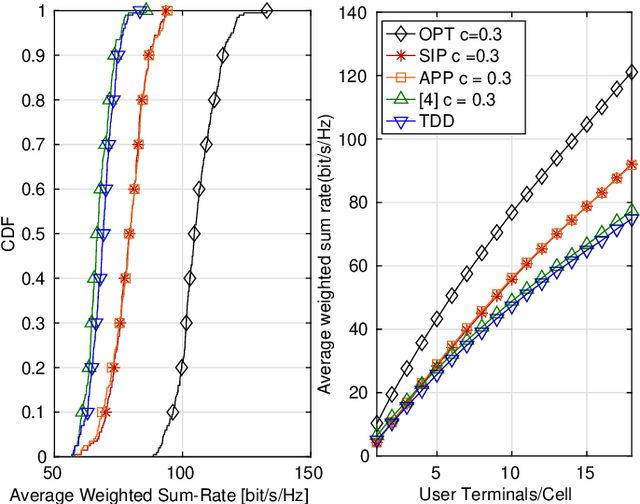
Abstract:Dynamic time-division duplexing (TDD) enables independent uplink/downlink mode scheduling at each cell, based on the local traffic. However, this creates cross-interference among cells. Thus, the joint power allocation and scheduling problem becomes mixed-integer non-convex and turns out to be NP-hard. We propose a low-complexity and decentralized solution, where power allocation and scheduling are decoupled. First, power is allocated in a decentralized fashion, and then modes are scheduled by a non-cooperative game to achieve the mixed-strategy Nash equilibrium. We consider two possible approaches to compute the payoffs in the game, according to the cross-interference power model and the entailed communication overhead among cells. Simulation results are presented for an outdoor dense small-cell scenario, showing that our approaches outperform static TDD significantly.
 Add to Chrome
Add to Chrome Add to Firefox
Add to Firefox Add to Edge
Add to Edge